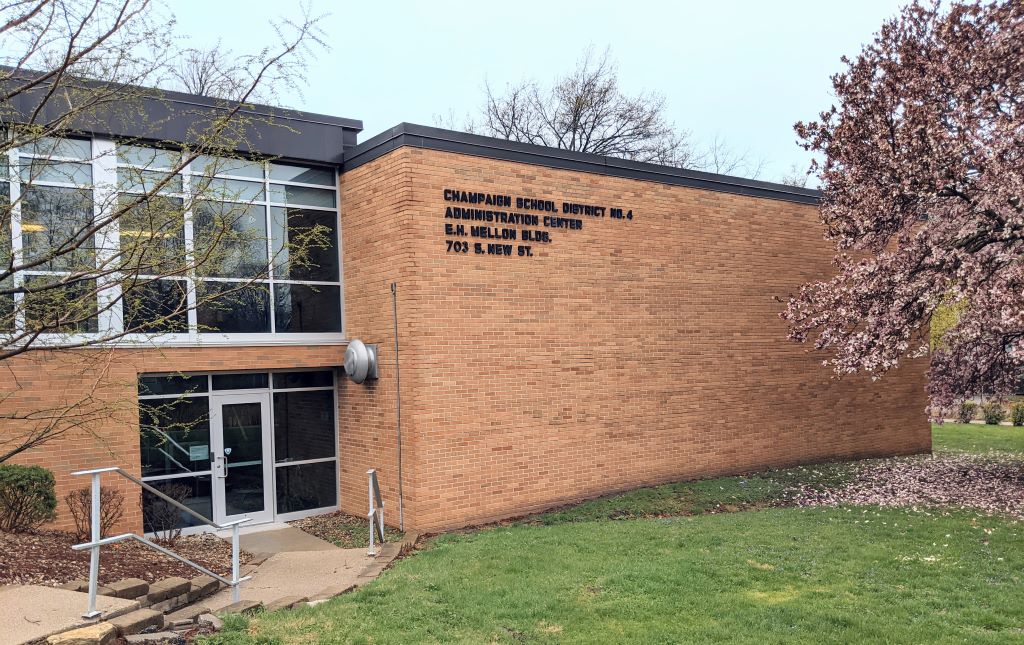Change, not Chaos.
Over the past several months, we’ve seen these gold and black signs scattered across front lawns in Champaign. They came from a group of parents formed in response to recent proposed changes to the schools of choice model in Unit 4 schools, Unit 4 Families for a Smarter Solution.
Implemented in 1998, there’s a long and complicated history of schools of choice. In short: it was created with the intention of desegregating the school district and reducing racial disparities in achievement, discipline, and other factors. When assigning schools using race as a factor was deemed unconstitutional, the district shifted to using socioeconomic status.
Despite various efforts over the years to tweak the assignment process, little progress has been made in balancing the school populations. In a letter to families, staff, and community members, Superintendent Sheila Boozer said as much.
She said that the district’s efforts have:
“[…] resulted in little to no progress in decreasing minority group isolation, closing pervasive opportunity gaps between white and black students, and increasing achievement rates for other historically underserved student groups, including multilingual learners and students with disabilities.”
At the end of September, the school board heard recommendations from the consulting group Cooperative Strategies for revamping the district’s school assignment system. To say the initial recommendations caused a stir would be an understatement. One proposed scenario would create clusters of elementary schools, and families would choose from four options rather than 12. The other would create “sister schools” out of Carrie Busey and Booker T. Washington, and Barkstall and Stratton, where students near those schools would attend one for K-2, and the other for 3-5. The rest of the schools would be neighborhood schools. These scenarios would have resulted in uprooting anywhere from 65 to 90% of students from their current elementary school placement.
A survey was sent to Unit 4 families in October, and results reported in December indicated that a majority did not support either of the two proposed models. Parents got vocal in other ways, showing up at school board meetings, distributing the aforementioned yard signs, and attending focus groups. Their concerns had merit. Changing up school assignments for a majority of elementary school students, who’d already experienced major disruptions caused by the pandemic, would create some chaos.
After focus groups, surveys, emails, board meeting comments, and more, the school district listened, and Cooperative Strategies came back with different proposals that would not cause such disruption. Last week, the board voted to approve one of these proposals. Instead of switching up elementary school assignments, this plan would involve changing how some elementary schools feed into middle schools. It also eliminates the balanced calendar at Barkstall and Kenwood, makes International Prep Academy and Garden Hills preK-8th grade buildings, and reserves seats in elementary schools for late registrations. The new plan makes changes, and asks some families in the district to make adjustments, but far fewer families than would have been impacted by the initial proposals.
In other words, they created change, not chaos.
It’s been a rough couple of years for the Unit 4 School Board and administration. We have not shied away from pointing out how they’ve been lacking. We’ve been critical of their communication strategy (or lack thereof) and their handling of the most recent teacher contract negotiations. However, we feel it’s important to recognize this particular situation. They listened. The process for gathering input from families in the district may have been clunky, but ultimately they heard the overwhelming response from people and changed course.
There are still plenty of complaints circulating in regards to this decision. Spend a few minutes in the Unit 4 Families for a Smarter Solution Facebook group, or read some of the news stories regarding the changes, and it’s apparent. In a recent WAND News story, one parent said the changes had him “terrified,” which seems somewhat hyperbolic. He talks about moving or looking into private schools, which are refrains frequently heard in relation to school assignment in Unit 4 Schools. Champaign has experienced its share of white flight over the past couple of decades.
The ultimate goal of this shift in school assignment is creating more equity in the schools, something this particular board has been committed to. As previously stated, desegregation efforts in Unit 4 have not necessarily achieved this goal over the years, and it remains to be seen whether this current shift will make a significant difference. Illinois Public Media recently asked a handful of experts about the benefits of desegregation, and their opinions were mixed. This strategy alone will not “solve” the problem of achievement disparity, and the board and Dr. Boozer have offered assurance that it’s only part of their broader strategic plan.
Change is needed to ensure that all Unit 4 students receive the most educational benefit. We hope that parents will be able to make the necessary adjustments to benefit the community as a whole, and we hope that the district will be committed to transparency and clear communication as these changes are implemented.
The Editorial Board is Jessica Hammie, Julie McClure, Trude Namara, and Mara Thacker.








